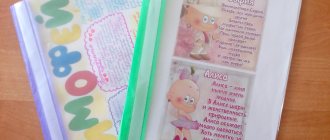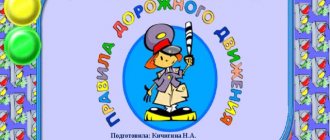Progress of the conversation:
Traffic lights were invented to regulate traffic safety on the streets. They became widespread after the invention of the automobile. Before that, there was no particular need for official traffic rules and traffic control devices: people relied more on common sense and correct behavior. But when the streets filled with fast and noisy cars, it became obvious that traffic regulation was necessary. Traffic lights, which forced some people to stop while others could move, were one way to protect cars and pedestrians from collisions and avoid traffic jams.
The first traffic light appeared in England in central London in 1868. This gas lantern, covered with red glass on one side and green glass on the other, was suspended from a high iron pole, and could be turned in one direction or the other by means of a handle mounted at its base. Of course, there were no cars at that time. But the number of steam-powered vehicles, animal-drawn carts, and pedestrians increased so much that traffic lights were needed to prevent accidents.
The electric traffic light was invented by Garrett Morgan, an African American inventor and businessman. After purchasing his first car, Morgan realized that some kind of traffic control was needed at intersections. He came up with a traffic light that worked on the same principle as the light signals installed at railway sidings . The first traffic lights had red and green lights, and when the light changed, an audible signal was heard. But as the traffic and associated noise increased, it became clear that the warning light that turned on between the "move"
and
“stand”
will be more effective than sound.
A yellow or orange signal has been added to traffic light signals to alert drivers that a stop
.
Conversation on the topic: “How to behave on the street”
Goal: to form in children an idea of safe behavior on the street.
Project on traffic rules in the preparatory group “ TRAFFIC RULES ARE WORTHY OF RESPECT!”
Type of project: Informational - educational.
Implementation timeframe: short-term
Project participants: children, teachers, parents of students.
Relevance The problem of road safety is currently one of the most important urban problems. The population is growing, more and more people are purchasing cars for personal use. The number of road traffic accidents is increasing. Unfortunately, they also happen with the participation of preschool children. Often, a child does not understand the real danger that threatens him on the road, and therefore treats the Rules of the Road without due attention. Goal: To develop safe behavior skills in preschool children on the road, on the street and in transport. To reinforce children’s understanding that the rules prescribed for pedestrians, passengers and drivers must be clearly known and followed. Objectives: - deepen children’s understanding of the Rules of the Road, acquired earlier; -continue to acquaint children with the meaning of road signs, understand their schematic representation for correct orientation on the streets and roads; - to form in children basic knowledge about reflective elements. — develop in children a sense of responsibility in observing traffic rules; — develop caution, attentiveness, independence, responsibility and prudence on the road ; - develop memory, speech, logical thinking, attention. — to cultivate the moral qualities of an individual necessary for mastering and following traffic rules: attentiveness, observation, discipline; — develop skills of cultural behavior on the street and in public transport.
Stages of work: 1. Preparatory stage. - selection of methodological literature; - drawing up a long-term plan; - development of didactic material.
2. Main stage: - selection of material on traffic rules; - examination of drawings, photographs about road situations; - viewing of video material; - familiarization with fiction.
1. Conversations: “Road safety”; “What road signs do you encounter on the way to kindergarten”; “Responsibilities of a pedestrian”; “Attention, road signs !”; “Transport on city streets”; “Rules for passengers”;
2. Artistic creativity: drawing: “Create a new road sign.” sculpting: “Funny traffic light.” applique: “Road sign.”
3. Analysis of situations: “What would happen if there were no traffic ?”; “What if all the signs were mixed up?”
4.Reading fiction: S. Mikhalkov “Traffic Light”, “Bad History”, “My Street”; N. Kalinin “How the guys crossed the street”; A. Northern “Three wonderful colors”; P. V. Ivnev “How the street talks”, G. Yurmin “Curious little mouse”; N. Nosov "Car".
5. Making riddles, looking at illustrations “Road signs”, “Children and the road”, “Road safety”.
6. Viewing electronic presentations, cartoons: “Road Rules”; “In the Land of Road Signs”; “Smeshariki on the Road”; “Road Rules”.
7. Outdoor games: “Pedestrians and cars”, “Traffic officer”, “Stop - go”., “Be careful”;
8. Didactic games: “Road Lotto”; “Know and follow the traffic rules”; “Who can name the most road signs?”; “Traffic light”; “Find out by description.”
Working with parents:
Memos to parents: “Know and follow the traffic rules yourself. Be an example of discipline on the street for children"; "Why do we need reflectors on clothes." Booklets: "Causes of children's road traffic injuries."
Bibliography:
N. N. Avdeeva, O. L. Knyazeva, R. B. Sterkina.
“Safety”: A textbook on the basics of life safety for children of senior preschool ageN. N. Avdeeva, O. L. Knyazeva, R. B. Sterkina, M. D. Makhaneva “Safety on the streets and roads” Methodological manual for working with children of senior preschool age.” K. Yu. Belaya K. Yu. “Formation basic safety principles for preschoolers" Downloaded: 44 times



